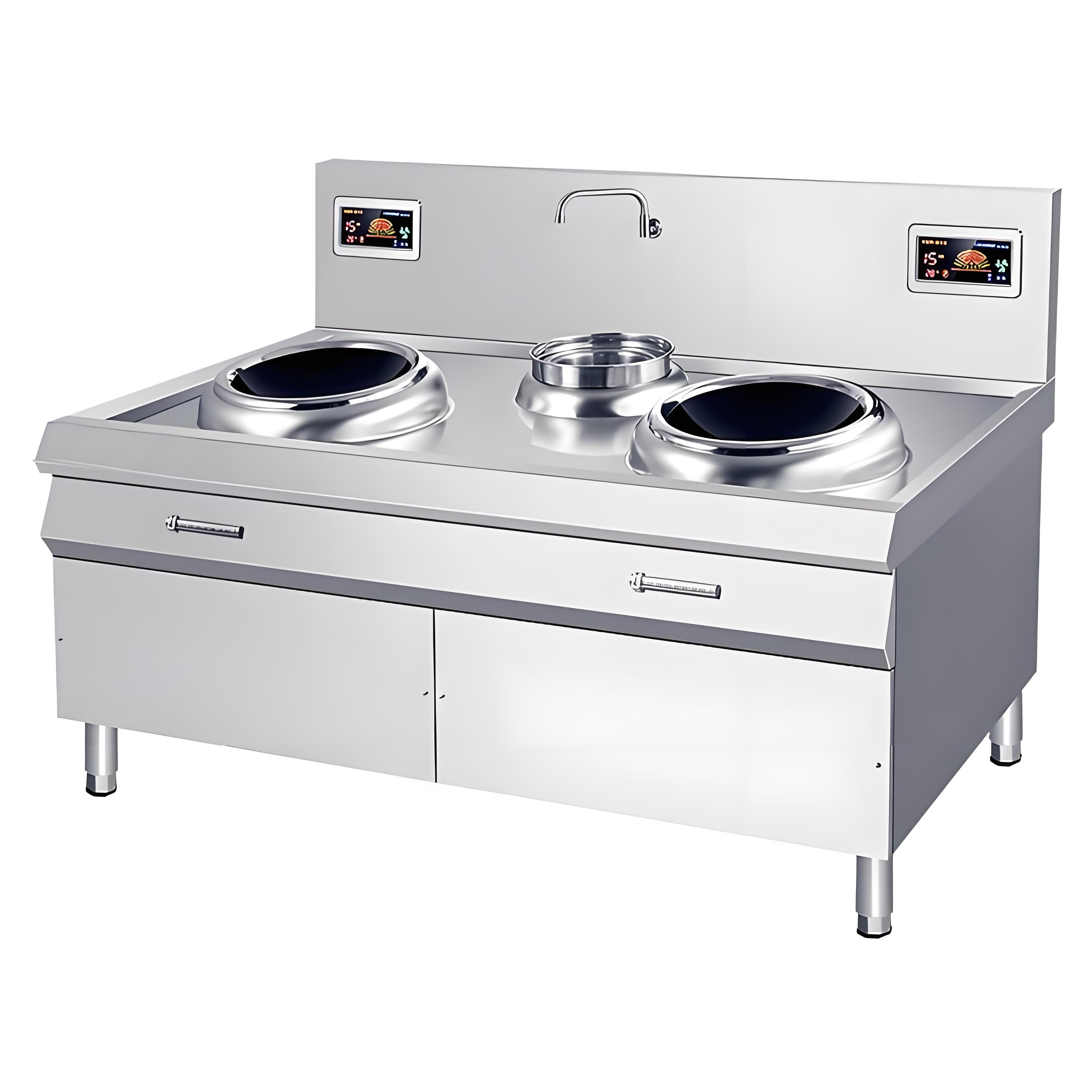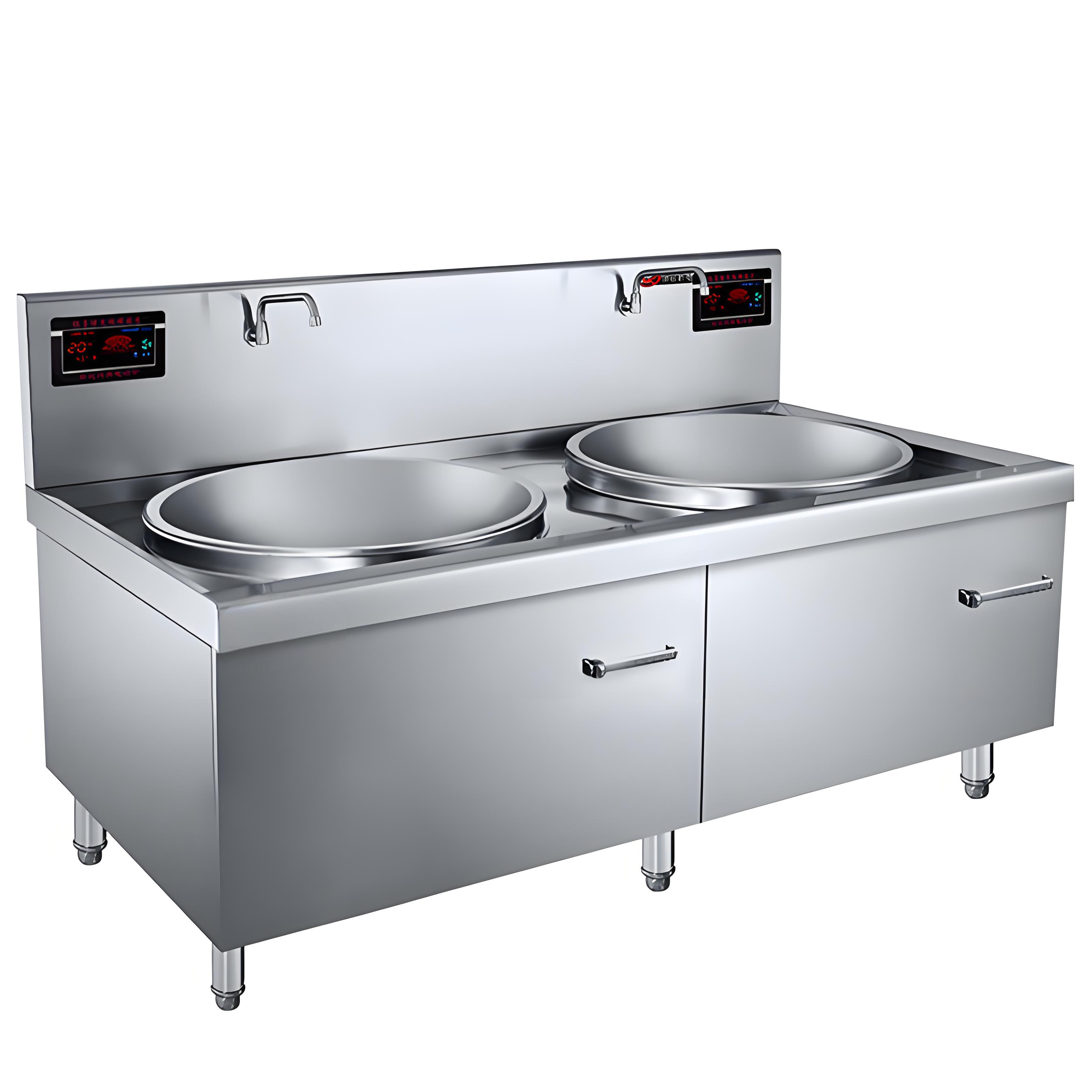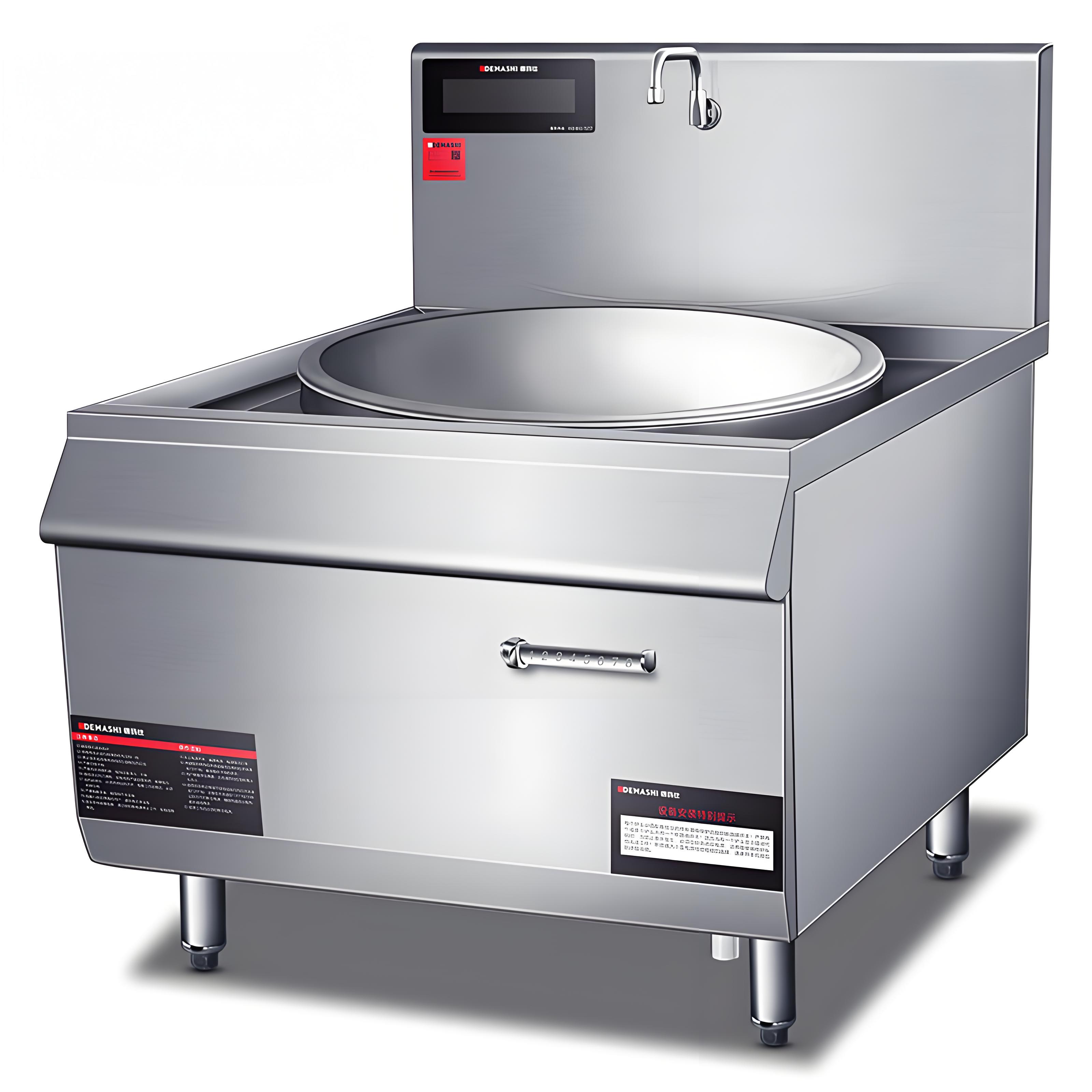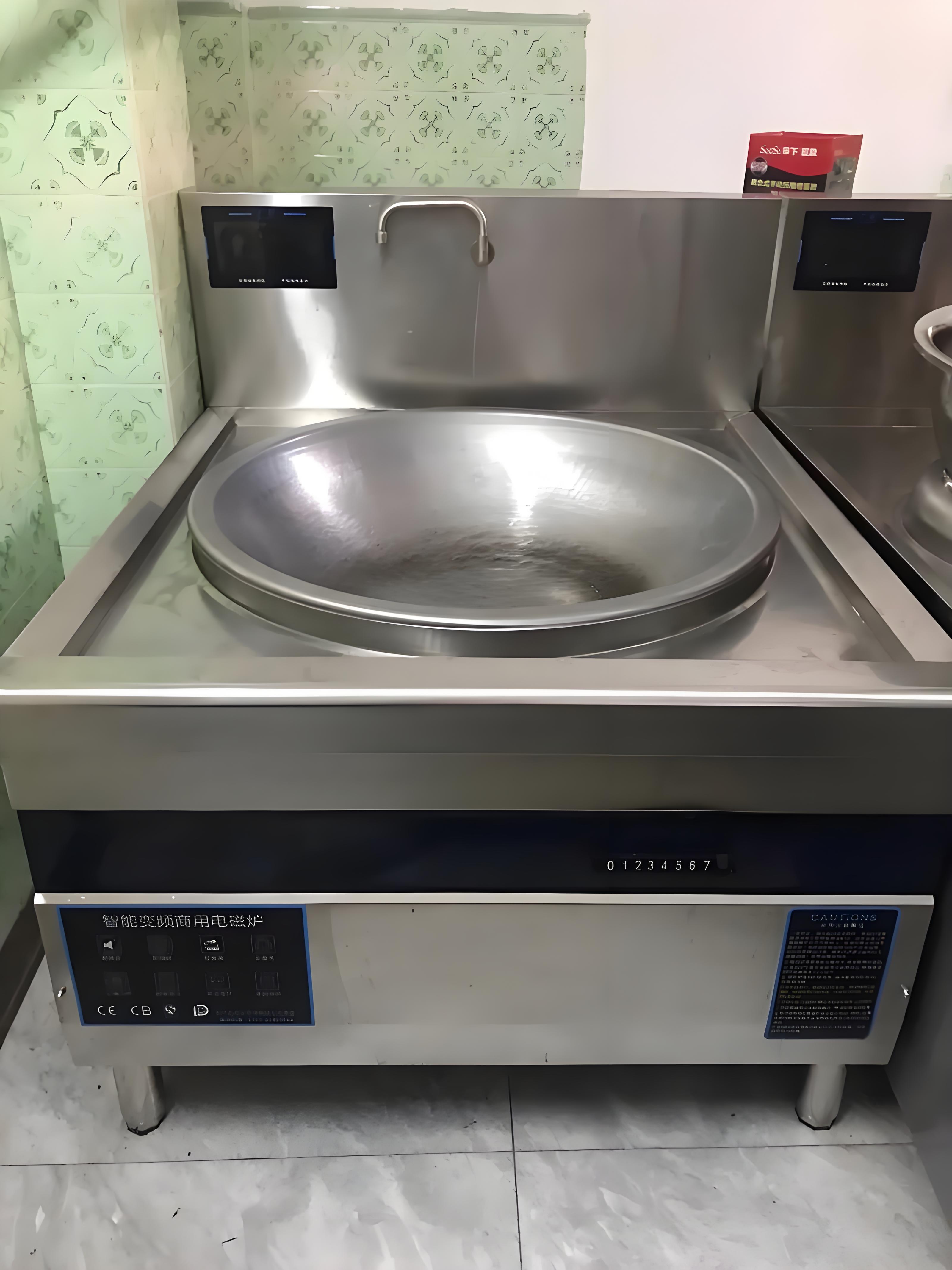As someone who’s spent over a decade working with commercial kitchen equipment, I’ve seen my fair share of bustling restaurant kitchens and the challenges that come with them. One issue that keeps popping up, especially with commercial induction cooktops, is dry burning—that dreaded moment when a pan overheats because it’s empty or the contents have evaporated. Not only can this ruin expensive cookware, but it also poses safety risks and can disrupt service. If you’re reading this, you’re likely looking for practical ways to avoid this problem. Let me share some hard-earned insights to help you keep your kitchen running smoothly.

Understanding Dry Burning and Its Risks
Dry burning happens when an induction cooktop heats an empty or nearly empty pan, causing excessive temperatures that can damage the cookware, trigger safety hazards, or even start a fire. Unlike gas or electric stoves, induction cooktops heat up rapidly and directly, so the risk escalates quickly. In a busy commercial kitchen, where staff juggle multiple tasks, it’s easy to overlook a pan left on the burner. I’ve seen warped pans, scorched surfaces, and even a few close calls with minor fires—all avoidable with the right approach.
The key is to combine equipment know-how, staff training, and smart practices. Below, I’ll walk you through actionable steps to prevent dry burning, drawing from years of experience and lessons learned in real-world kitchens.
Choosing the Right Cookware
The foundation of safe induction cooking starts with the right tools. Not all cookware is created equal, and for induction cooktops, compatibility is critical. Here’s what I’ve learned works best:
Material Matters: Use cookware made of ferromagnetic materials like cast iron or stainless steel. Aluminum or copper won’t work unless they have an induction-compatible base. I once saw a chef try to use a fancy aluminum pan on an induction cooktop—nothing happened, and the frustration was real.
Flat and Thick Bases: Pans with flat, thick bottoms ensure even heat distribution and reduce the risk of hot spots that can mimic dry burning damage. Thin-bottomed pans heat unevenly and are more likely to warp.
Size Matching: The pan’s diameter should match the induction burner’s size. Too small, and the cooktop may not detect it, leading to inconsistent heating. Too large, and you risk uneven cooking or energy waste. I recommend checking the manufacturer’s specs for each burner.
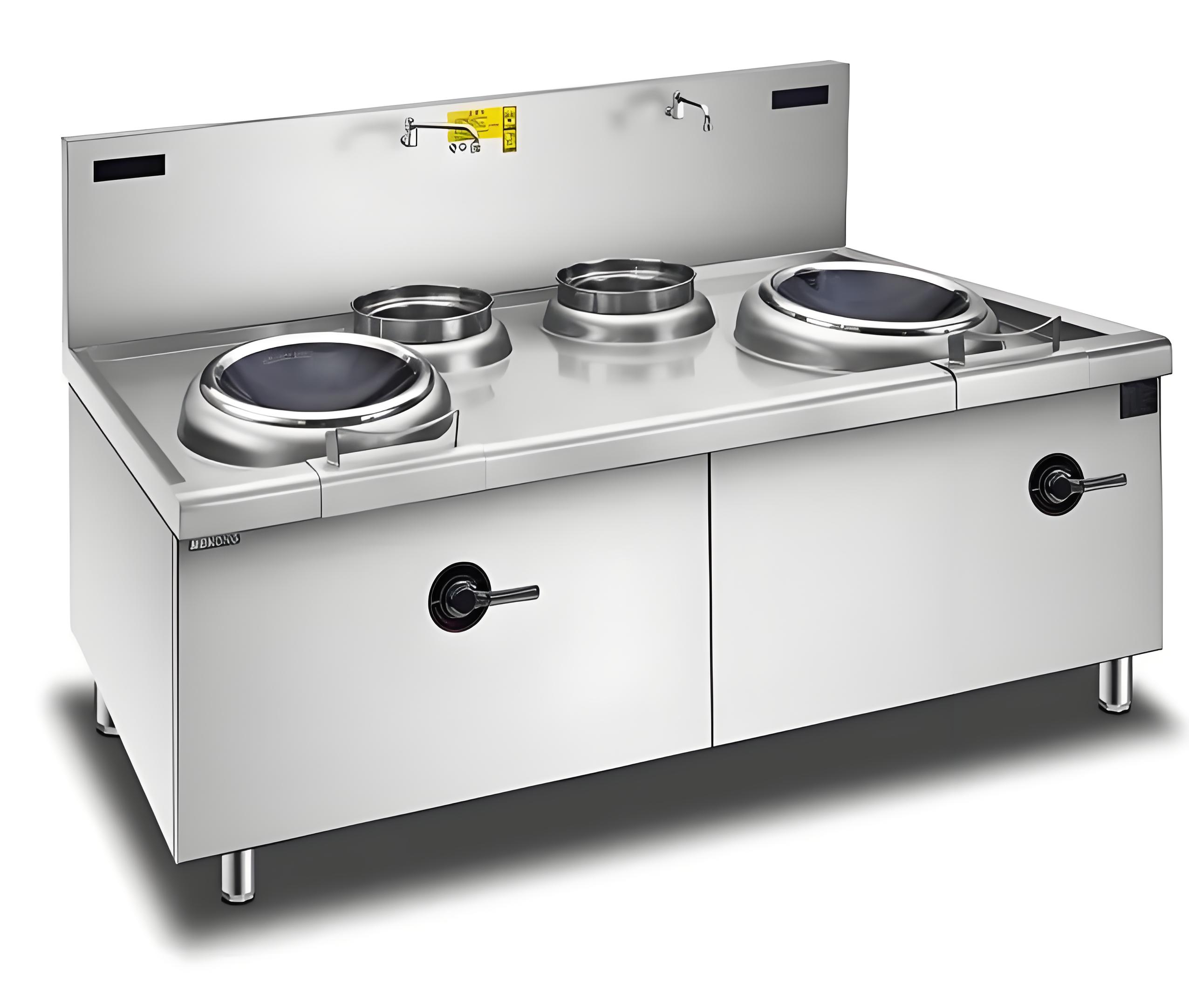
To make this clearer, here’s a quick guide to choosing induction-friendly cookware:
| Cookware Type | Material | Induction Compatibility | Best Use |
|---|---|---|---|
| Cast Iron | Ferromagnetic | Excellent | Slow cooking, searing |
| Stainless Steel | Ferromagnetic | Good to Excellent | General cooking |
| Aluminum (with induction base) | Mixed | Good (if base is compatible) | Lightweight tasks |
| Copper | Non-ferromagnetic | Poor (unless with induction base) | Not recommended |
Always test new cookware by placing it on the cooktop and checking if the burner activates. If it doesn’t, swap it out to avoid wasting time and risking damage.
Leveraging Cooktop Safety Features
Modern commercial induction cooktops come with built-in features to prevent dry burning, and I can’t stress enough how important it is to understand them. Here’s what to look for and how to use them:
Pan Detection Sensors: Most induction cooktops won’t turn on unless they detect compatible cookware. If a pan is removed or empty, the cooktop should shut off automatically. In my experience, brands like Vollrath and Panasonic have reliable sensors, but always test this feature during setup.
Overheat Protection: Many models have sensors that detect excessive temperatures and reduce power or shut off. I’ve seen this save the day when a distracted cook left a pan on high heat.
Timer Functions: Set timers to automatically turn off the cooktop after a set period. This is a lifesaver in fast-paced kitchens where staff might forget to switch off a burner.
Temperature Control: Some advanced models allow precise temperature settings, reducing the chance of overheating. I once worked in a kitchen where we set a cap at 400°F for certain dishes to avoid scorching.
Before buying or using a cooktop, read the manual (yes, really!) to understand its specific safety features. Train your staff to rely on these tools—they’re not just bells and whistles but critical safeguards.
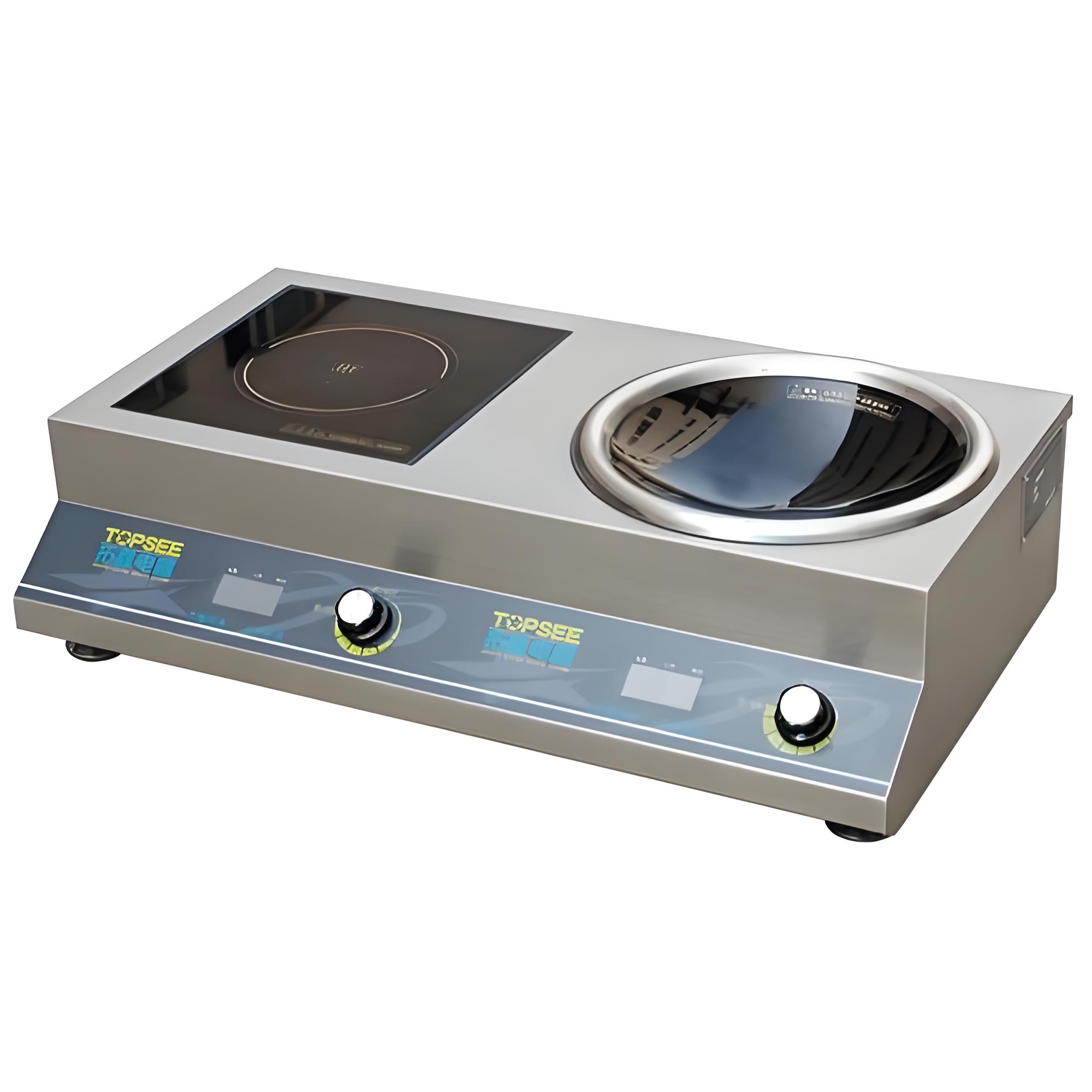
Training Staff for Vigilance
No matter how advanced your equipment is, human error is the biggest culprit behind dry burning. In my years managing kitchens, I’ve learned that training is the backbone of safety. Here’s how to instill good habits:
Educate on Induction Basics: Many new cooks don’t realize how fast induction cooktops heat up. I make it a point to explain that unlike gas, there’s no visual flame to gauge heat, so they need to stay alert.
Pre-Cooking Checks: Train staff to always check that pans have enough liquid or ingredients before turning on the burner. A simple rule I enforce is: “No contents, no heat.”
Task Rotation: In busy kitchens, multitasking can lead to oversight. Rotate tasks so no one is overwhelmed, and assign someone to monitor cooking stations during peak hours.
Visual Cues: Encourage staff to listen for sizzling or look for steam as signs that a pan is active. If it’s silent, it might be empty—check immediately.
I once had a junior cook who left a pan on because he got pulled into prepping vegetables. We avoided a disaster thanks to a vigilant sous-chef, but it was a wake-up call to reinforce training. Regular refreshers and hands-on demos work wonders.
Implementing Safe Cooking Practices
Beyond equipment and training, how you cook matters. Here are some practical habits I’ve adopted to minimize dry burning risks:
Start Low, Go Slow: Begin with a lower heat setting and increase gradually. Induction cooktops respond instantly, so there’s no need to crank it to max right away. I’ve seen too many pans ruined by starting at full power.
Use Enough Liquid or Oil: For dishes like soups or sauces, ensure there’s enough liquid to prevent evaporation during cooking. For frying, a thin layer of oil can act as a buffer.
Batch Cooking Awareness: In commercial settings, batch cooking is common, but it’s easy to forget a pan while prepping the next batch. Use timers or alarms to stay on track.
Clean as You Go: Spills or debris on the cooktop can interfere with pan detection sensors, so keep the surface clean. A quick wipe-down between tasks can prevent issues.
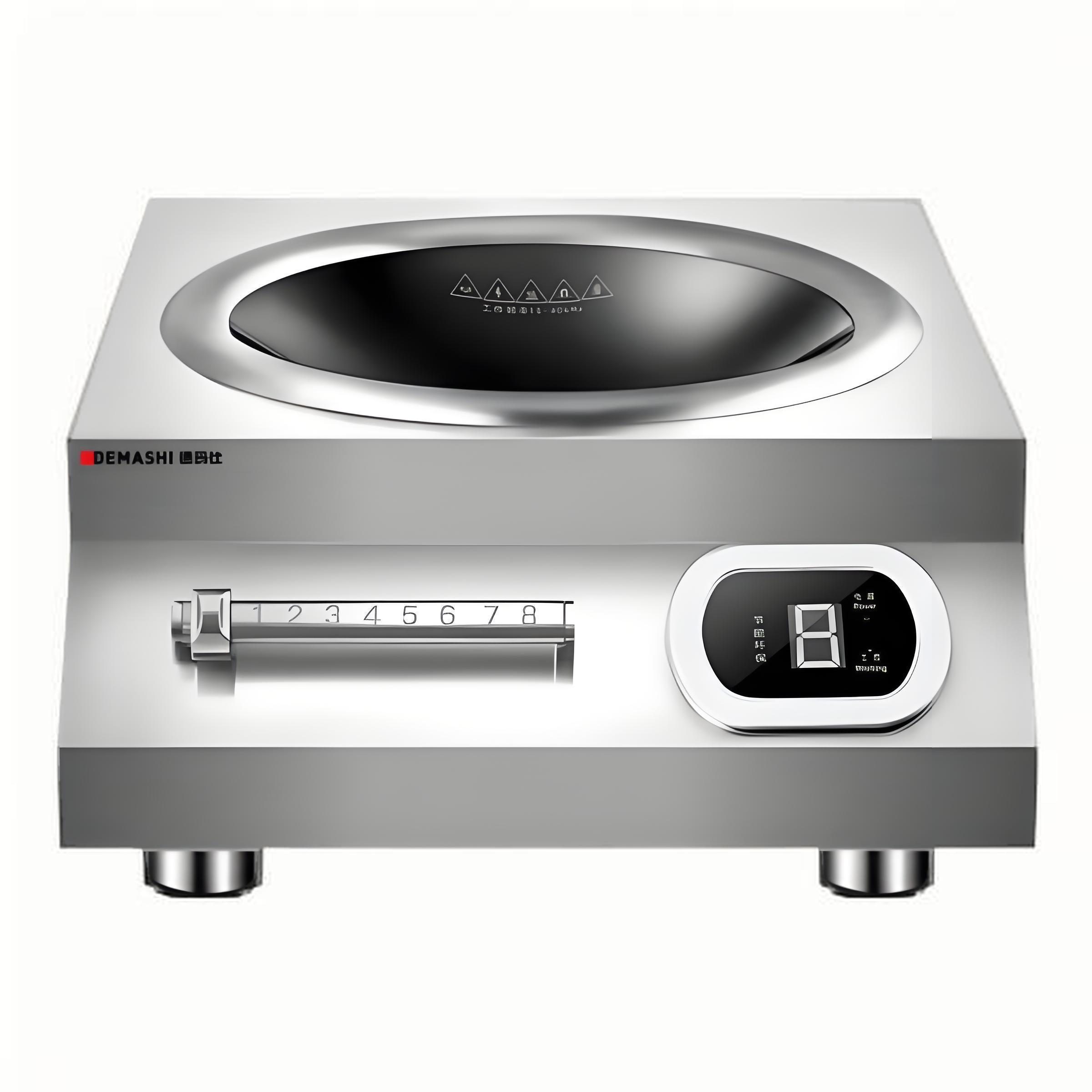
Here’s a handy checklist I share with my team to avoid dry burning:
| Task | Action | Frequency | Notes |
|---|---|---|---|
| Check Pan Contents | Ensure liquid or ingredients are present | Before turning on | Prevents empty pan heating |
| Verify Cookware | Confirm induction compatibility | Before each shift | Use a magnet to test |
| Set Timers | Use cooktop timer or external alarm | For long-cooking dishes | Avoids forgetting active burners |
| Clean Cooktop | Wipe down surface | After each use | Ensures sensor accuracy |
Maintenance and Regular Checks
Keeping your induction cooktop in top shape is crucial for preventing dry burning. I’ve seen neglected equipment cause all sorts of problems, from faulty sensors to uneven heating. Here’s my maintenance routine:
Daily Cleaning: Wipe down the cooktop with a damp cloth and mild detergent to remove grease or spills. Avoid abrasive cleaners that can damage sensors.
Sensor Calibration: Some high-end models allow sensor recalibration. Check the manual and do this monthly to ensure accurate pan detection.
Inspect Cookware: Regularly check pans for warping or damage. A warped pan might not sit flush, tricking the cooktop into thinking it’s empty.
Professional Servicing: Schedule annual maintenance with a certified technician. I learned this the hard way when a cooktop’s sensor failed during a busy dinner service.
In one kitchen I worked at, we had a cooktop that kept shutting off randomly. Turns out, a buildup of grease was messing with the sensors. A thorough cleaning and recalibration fixed it, and we avoided dry burning incidents after that.
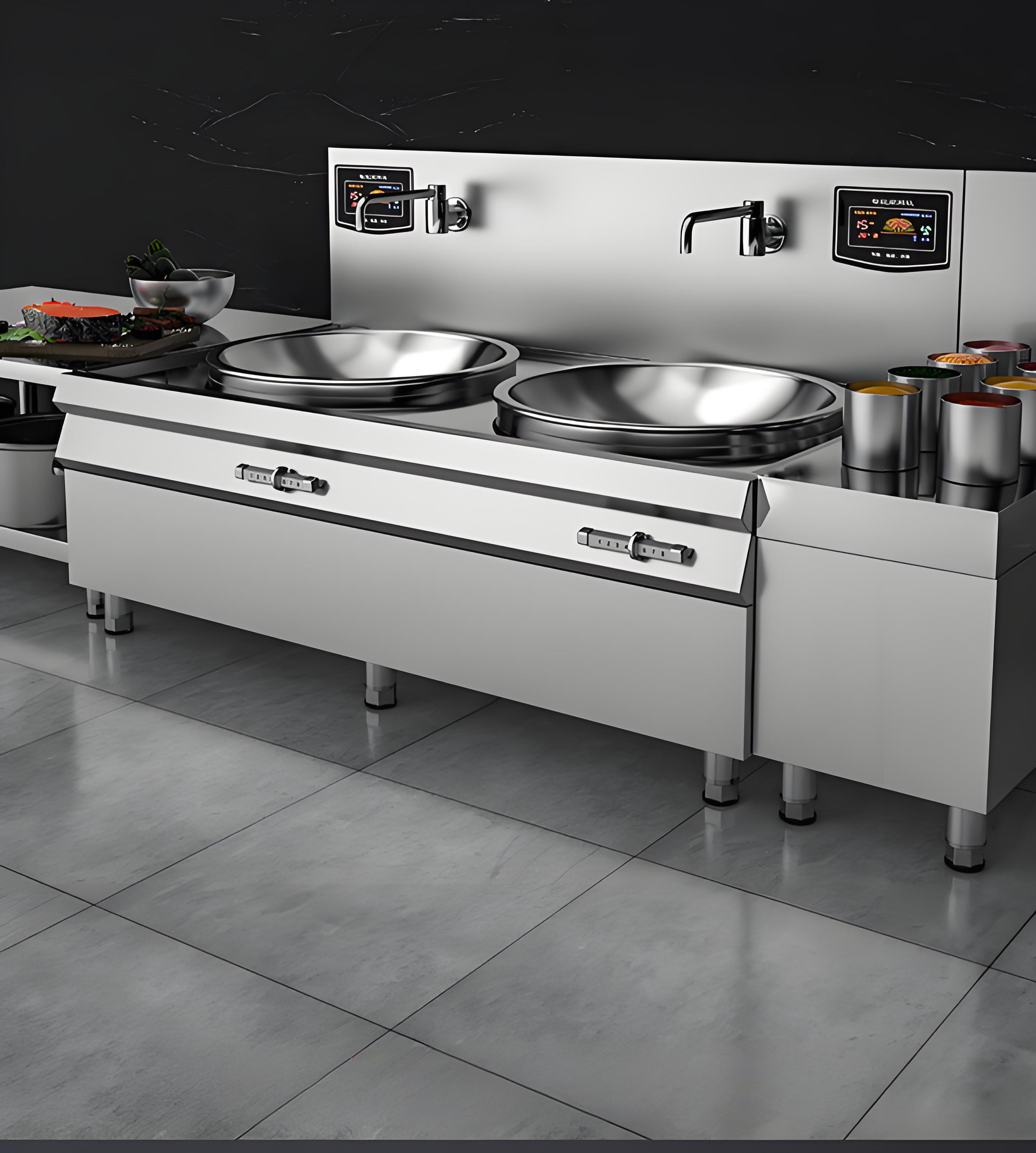
Emergency Protocols for Dry Burning
Even with the best precautions, accidents can happen. If dry burning occurs, here’s how to handle it:
Turn Off Immediately: If you notice a pan overheating, switch off the cooktop or remove the pan (use oven mitts!). Induction cooktops cool down quickly, which helps.
Ventilate the Area: If there’s smoke, open windows or turn on the exhaust fan to clear the air.
Inspect Damage: Check the pan for warping or discoloration. If it’s damaged, replace it to avoid future issues.
Review the Incident: Talk to your team about what went wrong and how to prevent it. I find that open discussions without blame encourage better habits.
I recall an incident where a pan started smoking because a cook forgot to add oil. We shut off the cooktop, aired out the kitchen, and used it as a teaching moment during our next staff meeting.
Why Prevention Is Worth the Effort
Preventing dry burning isn’t just about saving cookware—it’s about keeping your kitchen safe, efficient, and profitable. Damaged pans mean replacement costs, and accidents can halt service or worse, injure staff. By investing in the right cookware, leveraging safety features, training your team, and following smart practices, you can avoid these headaches. I’ve seen kitchens transform from chaotic to seamless just by focusing on these fundamentals.
In my current role, I oversee a team of 15 cooks, and we’ve gone a full year without a dry burning incident. It’s not because we’re perfect—it’s because we’ve built a system that prioritizes awareness and preparation. You can do the same with a bit of effort and consistency.
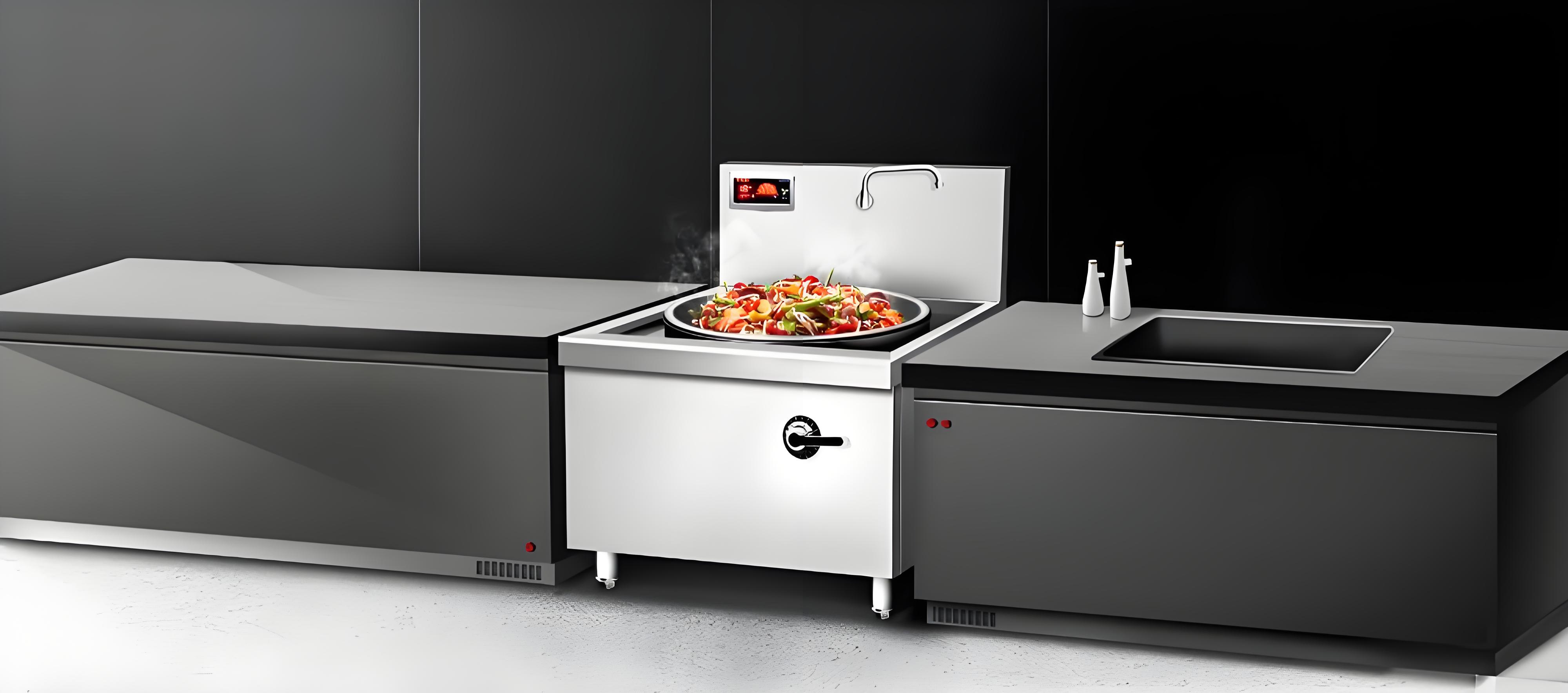
Related Questions and Answers
Q: Can any pan be used on an induction cooktop?
A: No, only ferromagnetic pans like cast iron or stainless steel work. Test with a magnet—if it sticks to the base, it’s compatible. Always check the pan’s specifications to be sure.
Q: What happens if a pan dry burns on an induction cooktop?
A: The pan can overheat, warp, or discolor, and in extreme cases, it could cause a fire. Most modern cooktops have safety features like overheat protection to shut off automatically, but don’t rely on them alone.
Q: How often should I train my staff on induction cooktop safety?
A: I recommend quarterly refreshers, plus immediate training for new hires. Regular drills and reminders keep safety top of mind, especially in high-pressure kitchens.
Q: Are there induction cooktops that are better at preventing dry burning?
A: Look for models with advanced pan detection, overheat protection, and precise temperature controls. Brands like Vollrath, Panasonic, and True Induction are known for robust safety features, but always compare specs.
